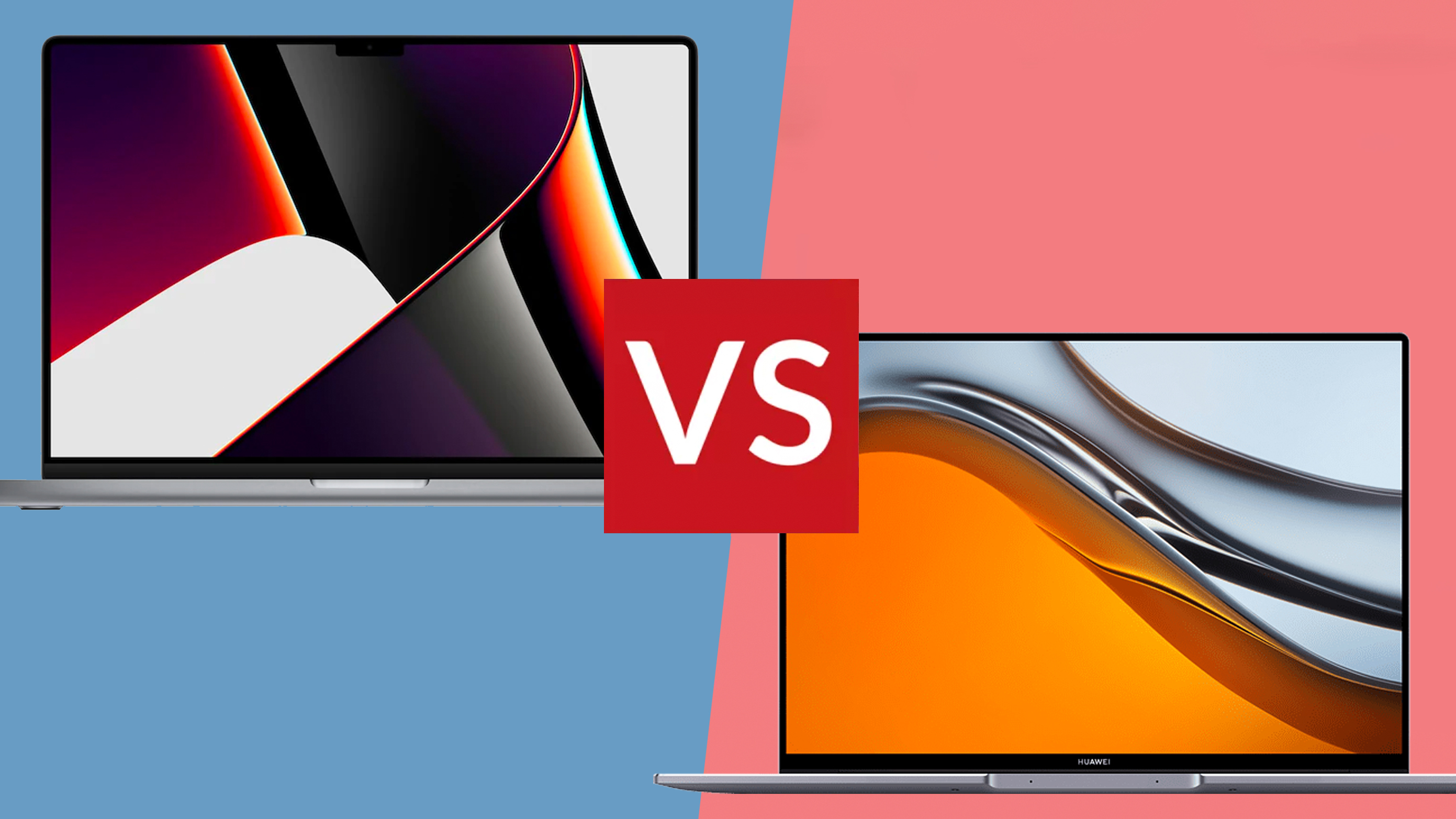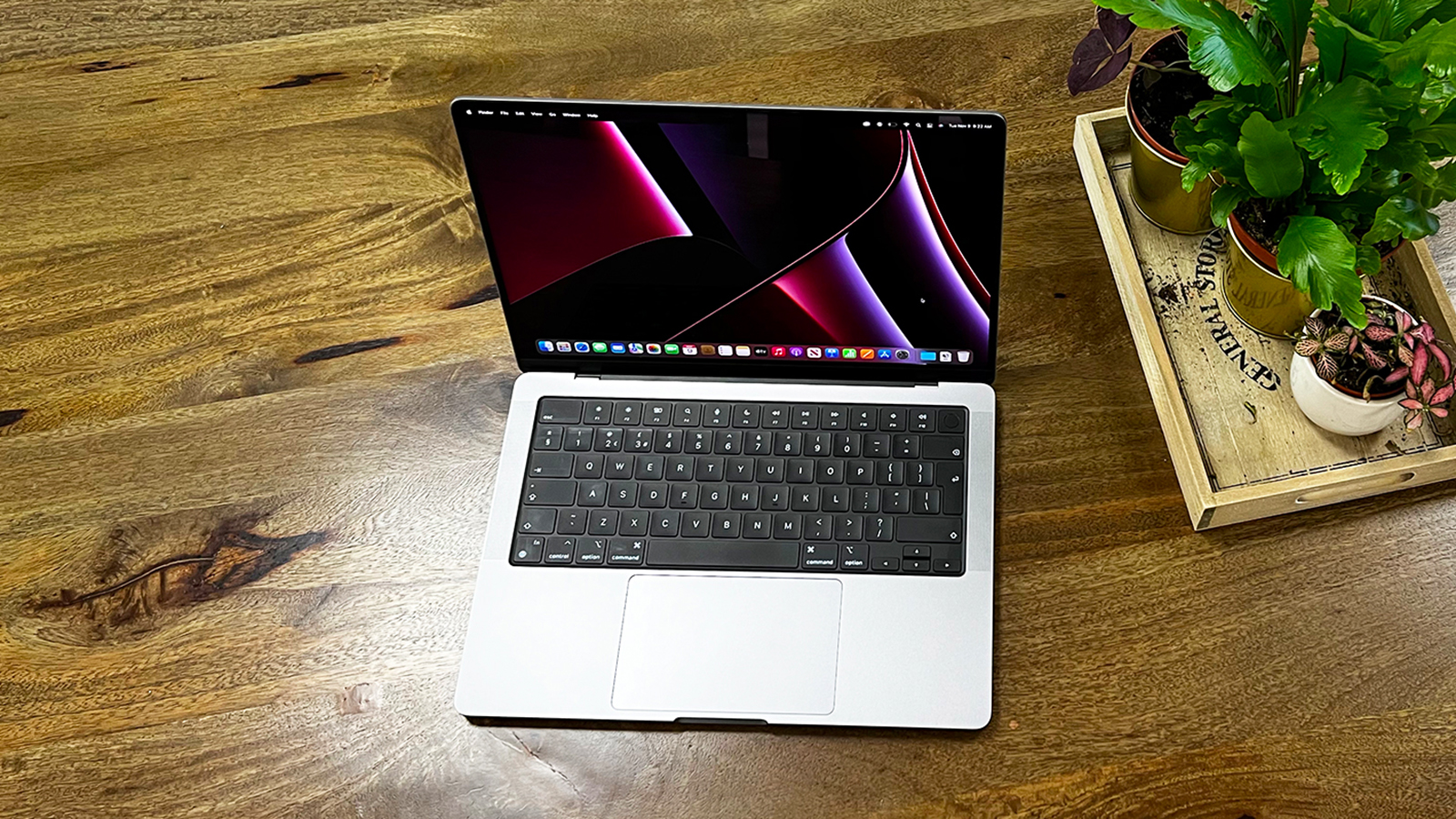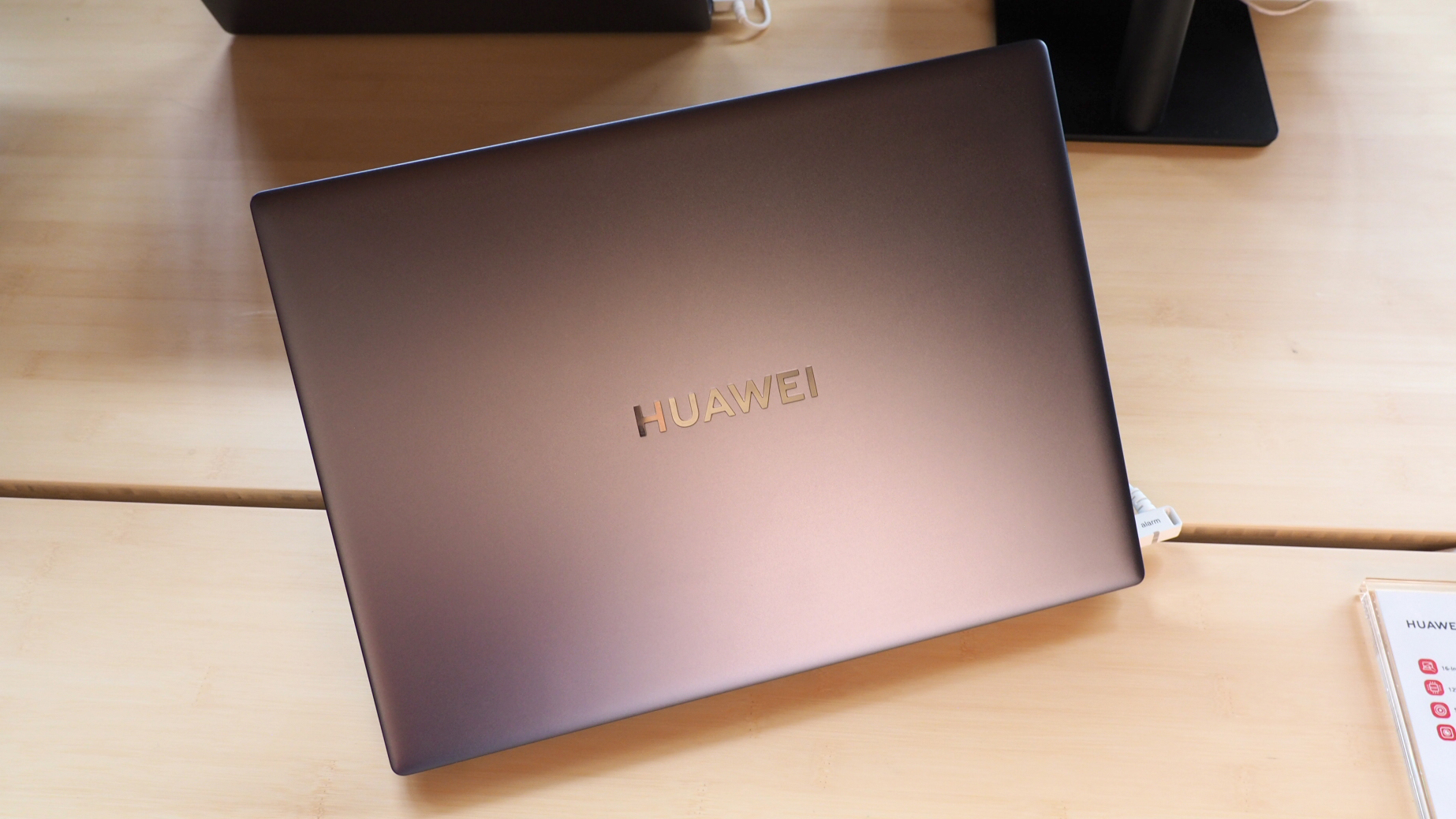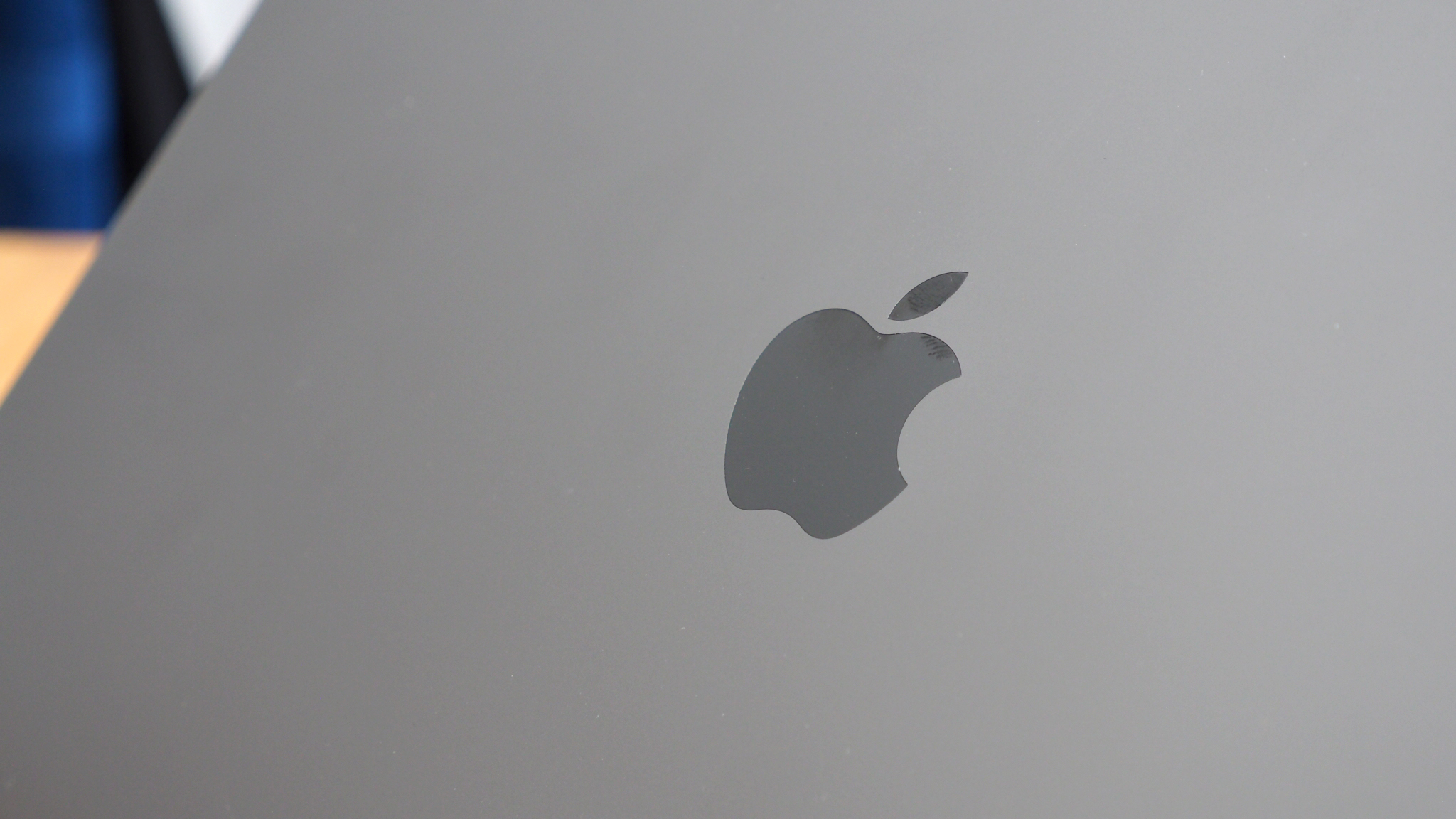
It's the 16-inch standoff for best laptop! Say hello to the two competitors: in the Windows corner there's the 2022 release Huawei MateBook 16S; in the macOS corner there's the 2021 Apple MacBook Pro 16. So which has got your backing?
The two laptops look very similar, as you can see from our versus image up top, delivering an aesthetic that has plenty of crossover. That said, the different operating systems, features and spec will make a significant difference in which you ought to choose. So here's how they compare.
MacBook Pro 16 vs Huawei MateBook 16S: Design

All things considered, there's not a gigantic difference between MateBook 16S and MacBook Pro 16 in terms of size and weight. If you're looking for specifics then the Huawei measures 351 x 252.9 x 17.8mm, while the Apple is 355.7 x 248.1 x 16.8mm.
Neither is small by any means, but that's the nature of a 16-inch laptop, so if you're looking for something smaller and lighter to cart around then these options probably aren't your best picks. Speaking of weight: the Huawei weighs 1.99kgs, while the Apple is heavier, at between 2.1-2.2kgs (depending on your processor selection).
In terms of connectivity there's one key point of difference: the MateBook 16S has two full-size USB ports that you won't find on the MacBook Pro at all. Both machines support Thunderbolt 4 speeds through USB-C, though, but there's only one of this stature on the Huawei (out of its two ports), whereas all three on the Apple are the fastest going. If you want an HDMI output then both have this built-in too. Photographer? It's only the Apple that offers a micro SDXC card slot.
In terms of power, the MacBook Pro sticks with Apple's tried and tested MagSafe 3, which magnetically 'clonks' into place and the cable is easily removed. The MateBook utilises one of its two USB-C ports, so if you're plugged in for high-intensity tasks or charging then you'll only have the one spare to play with for accessories. The Huawei battery is rated 84Whr, the Apple's higher at 100Whr.
MacBook Pro 16 vs Huawei MateBook 16S: Display

Sure, both of these laptops have 16-inch displays across their diagonal measure, but having seen both in person I can vouch that the Apple machine has got the upper hand when it comes to some of the details – but not all.
Sign up to the T3 newsletter for smarter living straight to your inbox
Get all the latest news, reviews, deals and buying guides on gorgeous tech, home and active products from the T3 experts
In terms of resolution, the MateBook 16S delivers 2520 x 1680 pixels total across its 90 percent screen-to-body ratio panel. That means lots of detail and little bezel. The MacBook Pro, meanwhile, offers 3456 x 2234 pixels across its 86 percent screen-to-body ratio. So the Huawei has less bezel overall and, fortunately, doesn't have a notch around the front-facing camera like the Apple does.
But the Apple doesn't only win in terms of sharpness, by offering more pixels, it's a much brighter panel too – and you can really see that. That's why Apple calls it a Liquid Retina XDR display, that acronym standing for 'Extreme Dynamic Range', capable of delivering 1000 nits across the full panel (1600 at its peak in an isolated window). By contrast the Huawei delivers 300 nits typical, so it's not nearly as punchy.
However, an area where Huawei has pushed to improve the MateBook 16S in with its display's features. Its colour accuracy is much higher than its predecessor, for example, with 100 percent sRGB available, plus there's a touchscreen interface – something that Apple shuns in all its laptops.
Perhaps the biggest difference of all, however, is that Apple's Liquid Retina XDR display can also refresh at 120Hz, which is double that of the Huawei's 60Hz panel. That'll make a difference in fluidity when it comes to content.
MacBook Pro 16 vs Huawei MateBook 16S: Spec

Power is one area where both laptops deliver strong, the Huawei MateBook 16S available with 12th Gen Intel Core i7 (12700H) and i9 (12900H) processor options, paired with 16GB LPDDR5 RAM.
In contrast, the Apple MacBook Pro 16 features the company's own silicon, M1, with the option to spec up M1 Pro or M1 Max instead. That unified memory ranges from 16GB to 32GB or even 64GB in the top-end Mac with M1 Max.
Both feature fans, so there can be some noise potentially, but from experience it's Windows machines on Intel that tend to kick the fans in sooner and sharper. Not that the Mac will be restrained enough to avoid using the fan with higher-intensity tasks.
How the power scales is all relative: an Intel Core i9 is roughly comparable to an M1. In theory Apple's chip should go the extra mile thanks to the fluid memory, but we have seen and heard of people falling into some issues with certain applications. Go with the M1 Pro or M1 Max option, however, and that's next-level power well beyond what Intel offers – but it'll cost a whole lot more cash (as I'll get to).
MacBook Pro 16 vs Huawei MateBook 16S: Price

Here's the big point of difference: the Huawei's starting price is £1,299/€1,699, increasing to £1,499/€1,899 for the i9 model. That's a lot of laptop – both physically and in power terms – for a very reasonable price indeed.
The Apple does things a bit differently and will set you back far more cash. The MacBook Pro 16 M1 costs a massive £2,399. Make that an M1 Max and it's £2,599. Max it out with M1 Max and 64GB memory and you're looking at £3,299. So, yes, it's hugely expensive.
That's going to be a massive appeal for Windows users, who can get a relative bargain. The macOS option is pretty much double the price – and, yes, it's more powerful, but maybe not as much as these figures would suggest.
MacBook Pro 16 vs Huawei MateBook 16S: Verdict
Now I'm not saying a macOS user is likely to shift allegiance over to Windows, or indeed vice versa, but if you're starting with a clean slate, unfazed by which operating system to work with, and weighing up the options, then both the Huawei MateBook 16S and Apple MacBook Pro 16 are good options – the appeal will ultimately be either led by price or power though.
What is boils down to, really, is the price point. That Huawei is offering a 12th Gen Intel Core i9 laptop for under £1,500 in the UK is impressive. All of Apple's 16-inch MacBook Pro options are north of £2,400, which is almost a grand different between the top-end MateBook and entry-level MacBook Pro.
Thing is, "entry-level" is no way to describe the MacBook Pro at all. And if you really need the utmost power, then the potential of Apple's M1 silicon, particularly in Pro and Max forms, is well ahead of Intel's maximum potential. You'll have to pay for the pleasure, of course, but for the sheer power factor the Apple product is streets ahead.
Plus the MacBook Pro 16 has a nicer screen than the MateBook (well, ignoring the notch around the camera) and that helps to further elevate it.
But if price is your leading factor and Windows appeals then the MateBook 16S has plenty to sell itself on. That might sit well with students working on creative courses or projects that are going to require a bit more oomph, but who can't afford the stacks of cash extra that the top-end Apple kit demands.

Mike is T3's Tech Editor. He's been writing about consumer technology for 15 years and his beat covers phones – of which he's seen hundreds of handsets over the years – laptops, gaming, TV & audio, and more. There's little consumer tech he's not had a hand at trying, and with extensive commissioning and editing experience, he knows the industry inside out. As the former Reviews Editor at Pocket-lint for 10 years where he furthered his knowledge and expertise, whilst writing about literally thousands of products, he's also provided work for publications such as Wired, The Guardian, Metro, and more.
-
 Leaked AirPods prototype looks like Nothing... literally
Leaked AirPods prototype looks like Nothing... literallyAnd we are here for them
By Britta O'Boyle Published
-
 OnePlus Watch 3 lands in the UK with a flurry of freebies and a huge discount
OnePlus Watch 3 lands in the UK with a flurry of freebies and a huge discountThe new titanium-clad smartwatch brings 120-hour battery life, ECG health checks, and some serious launch offers
By Matt Kollat Published